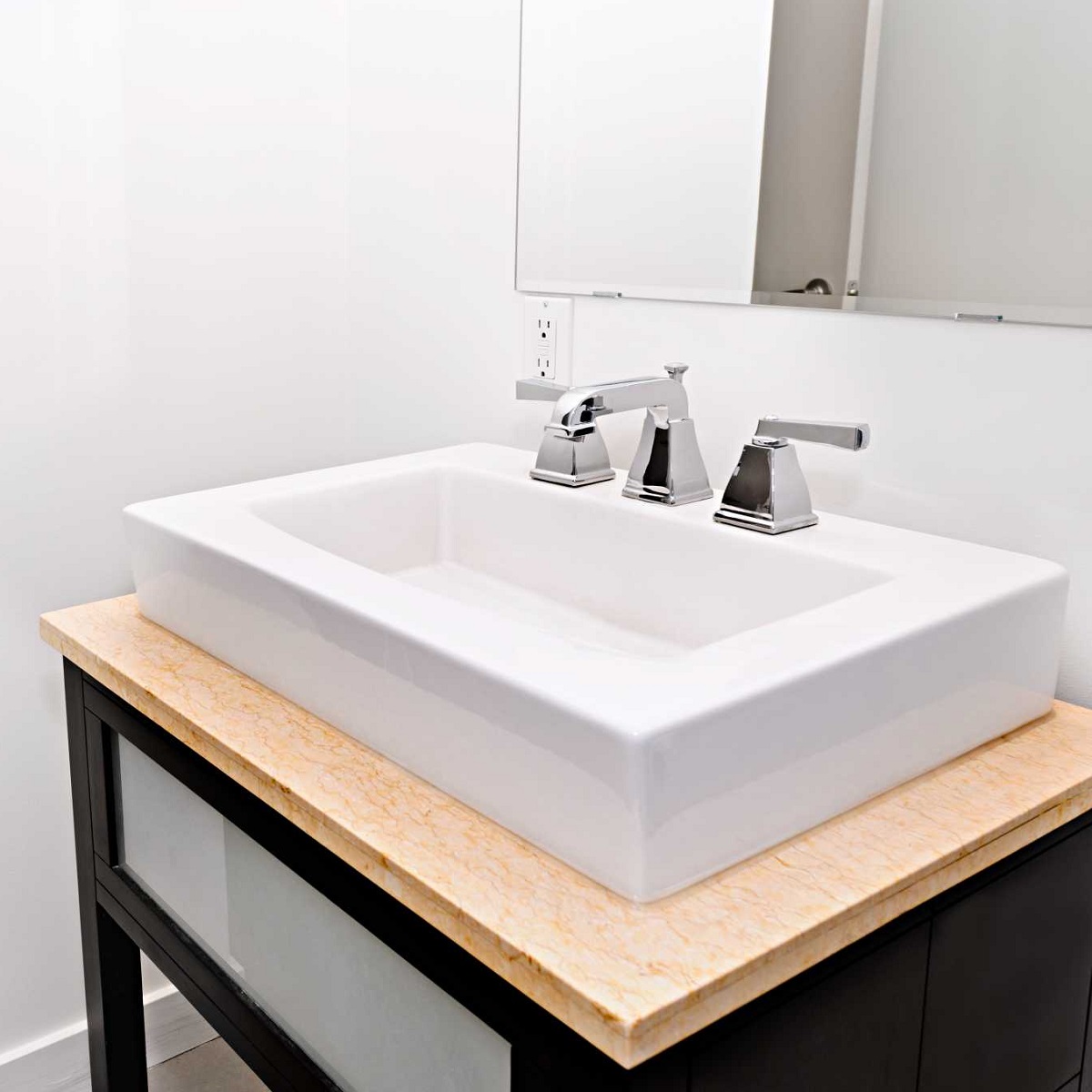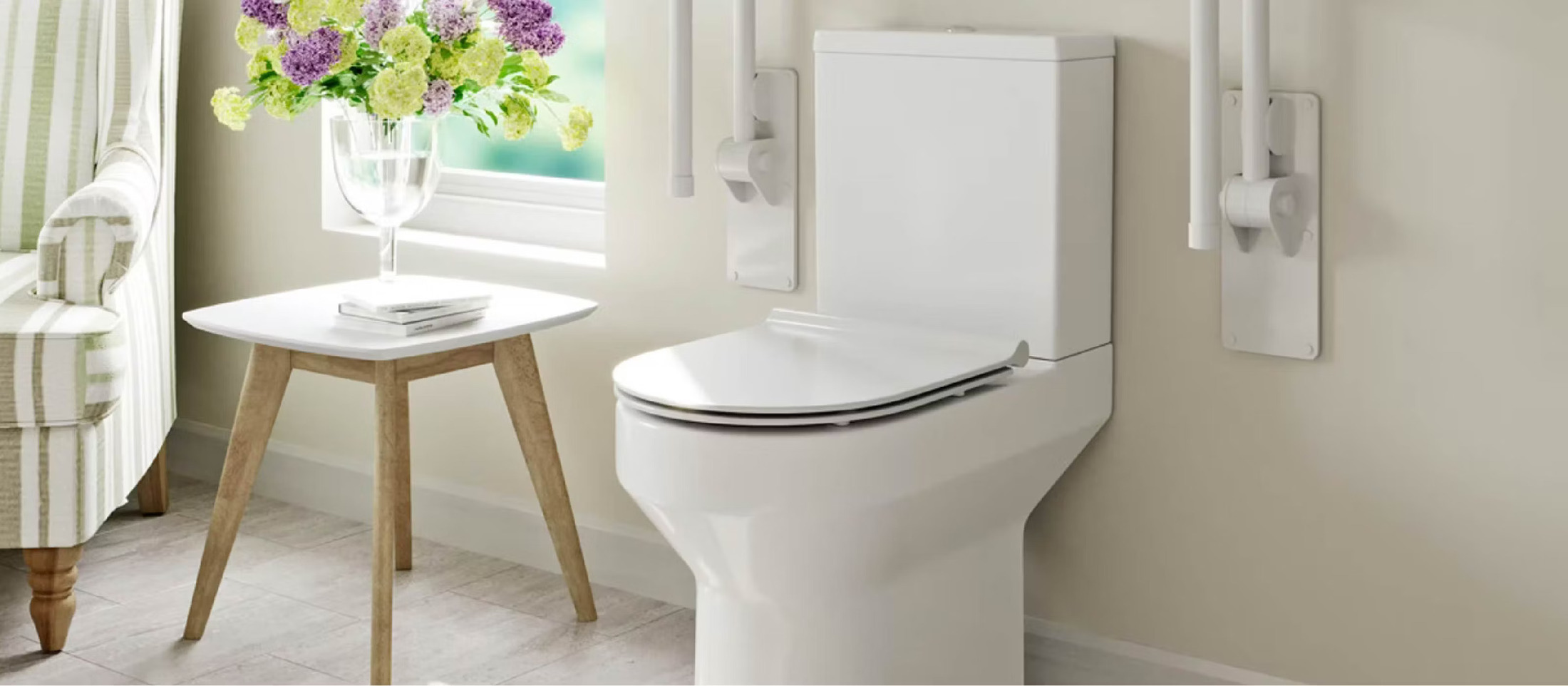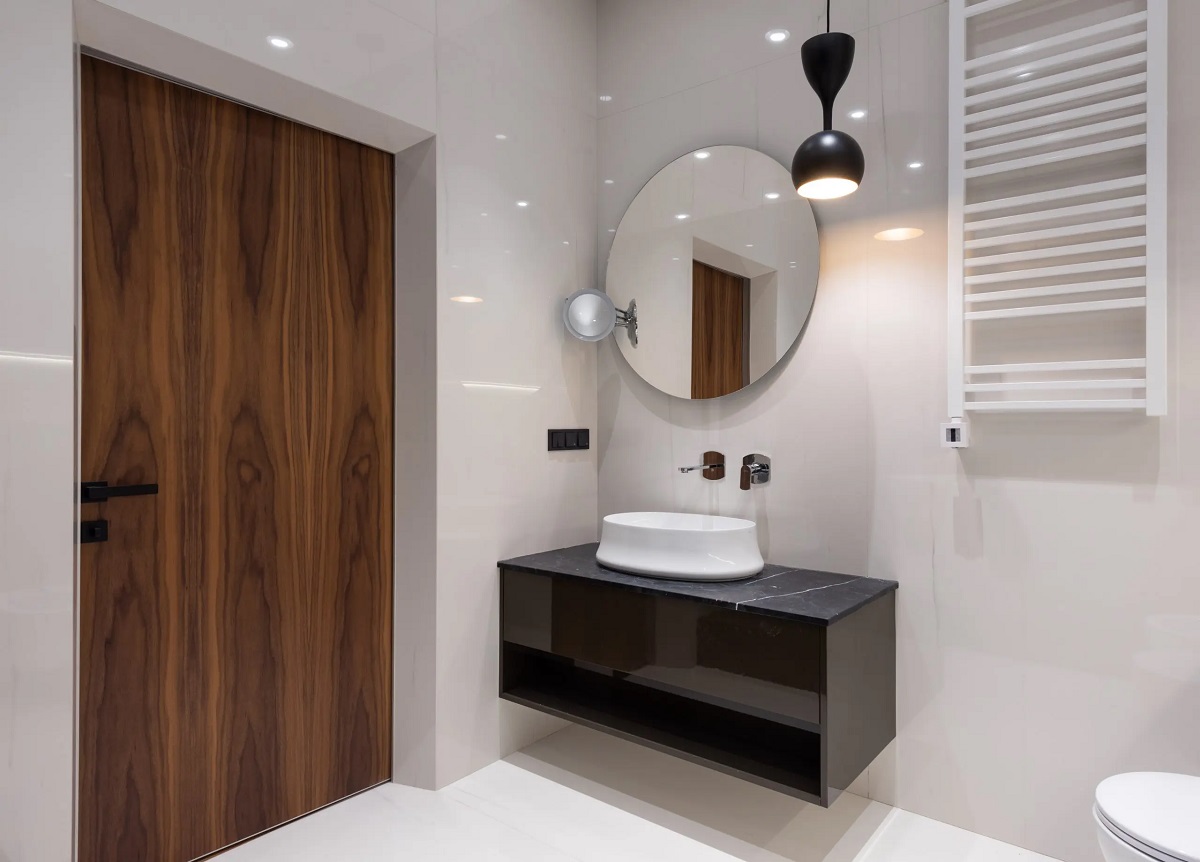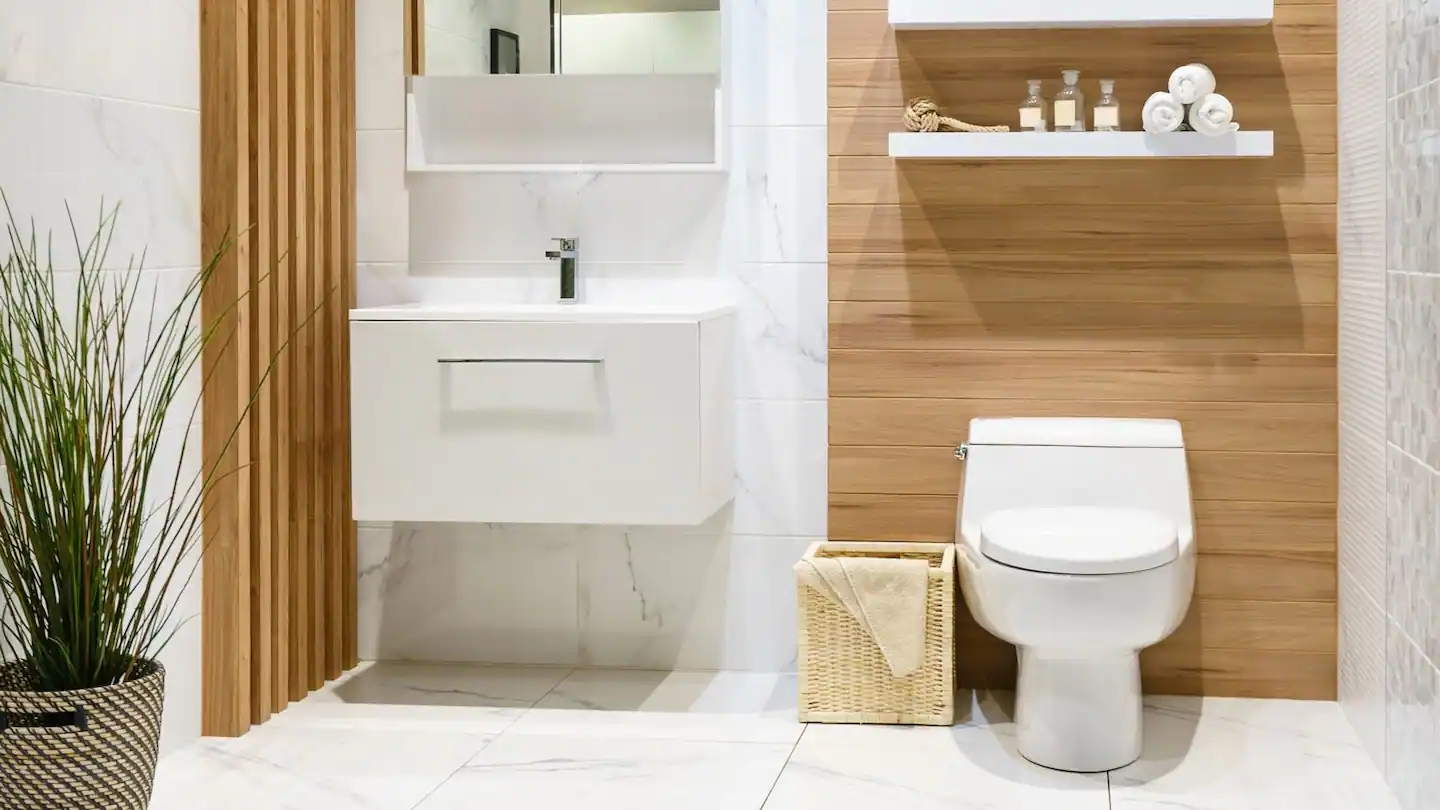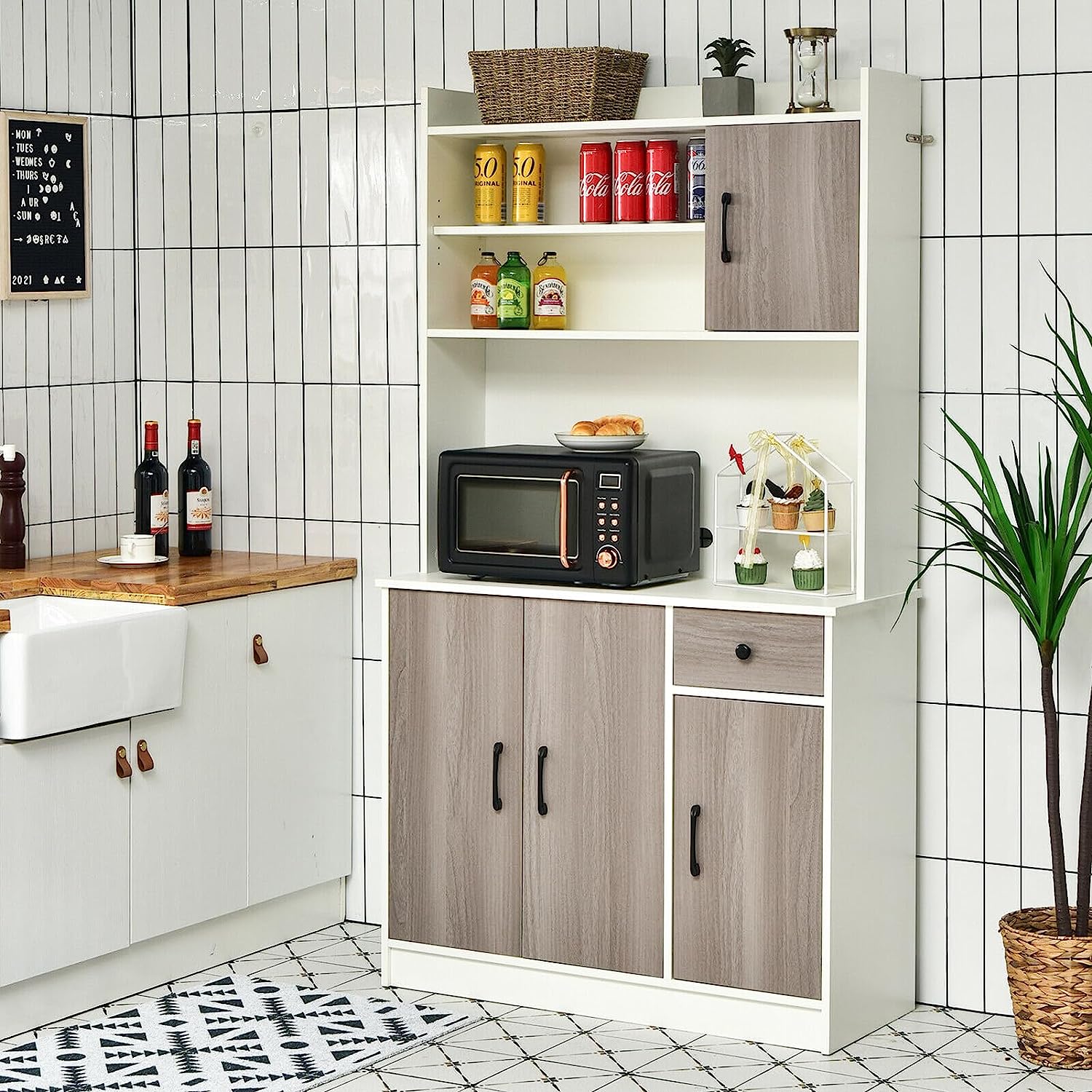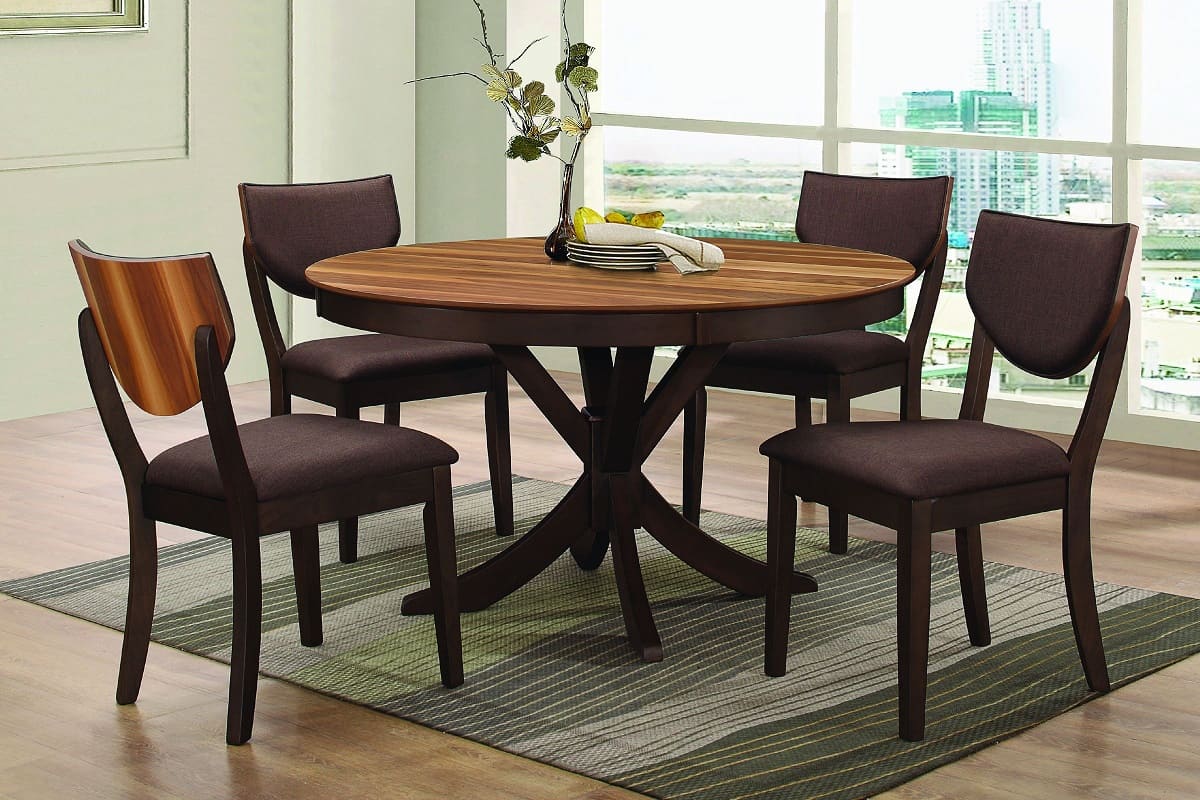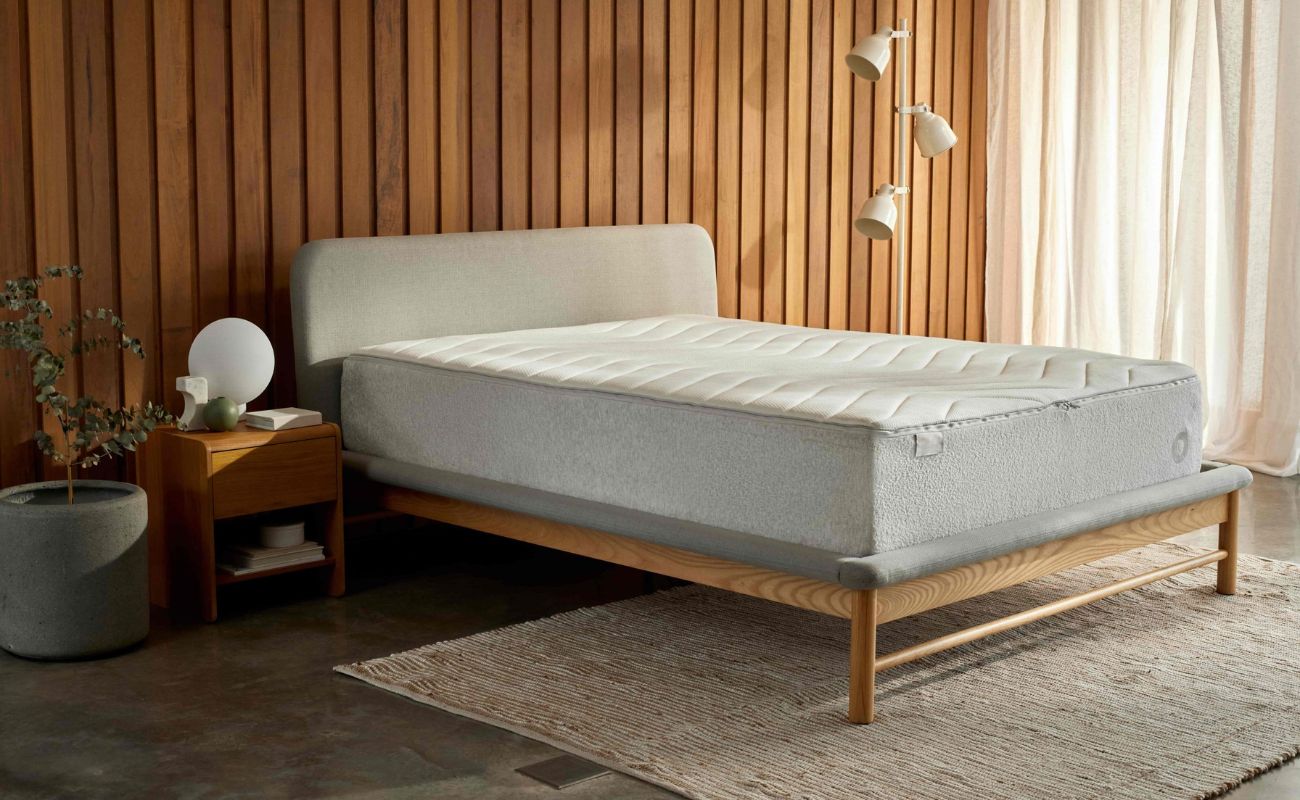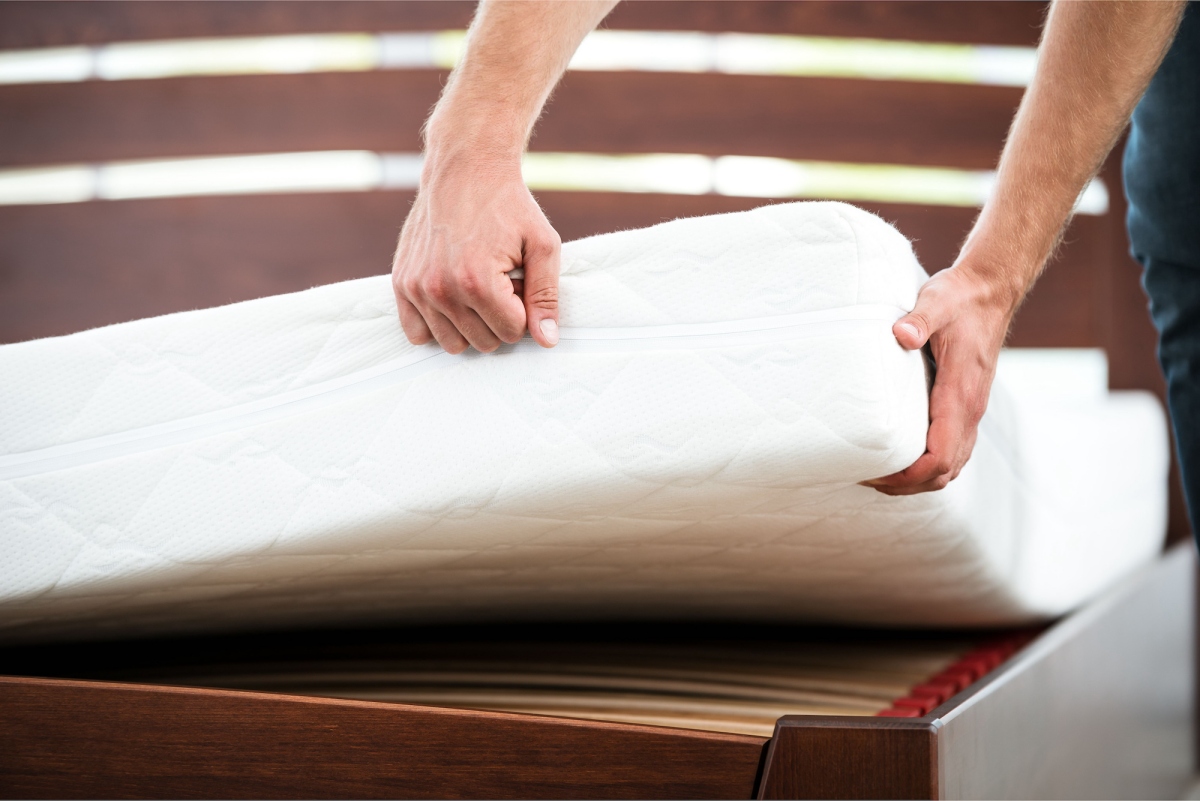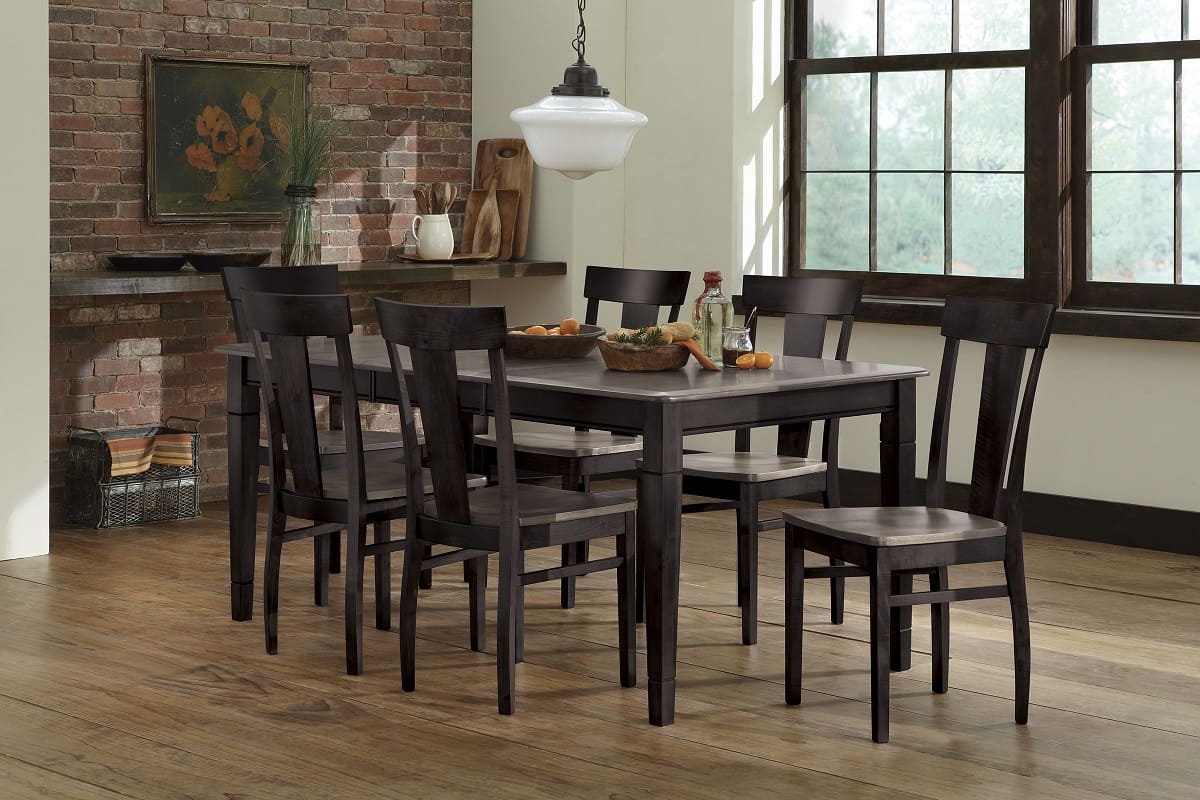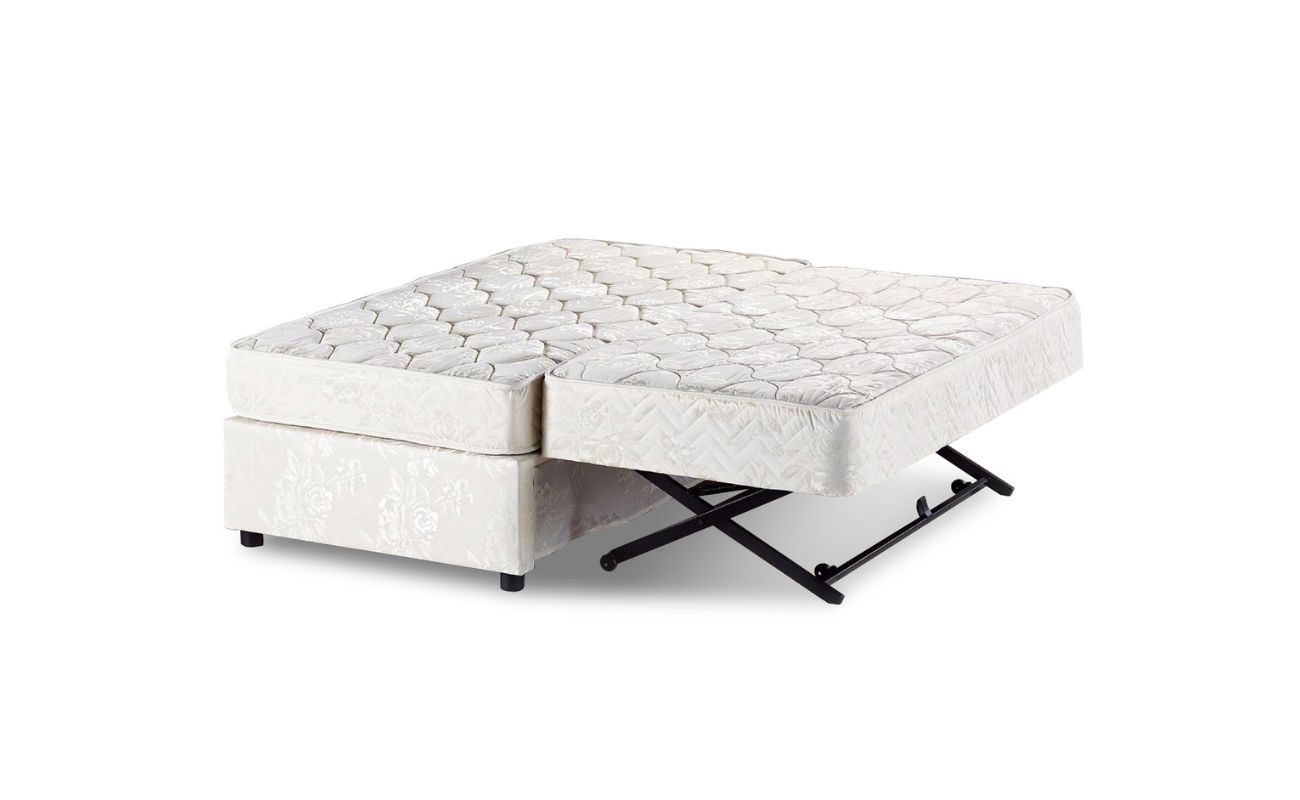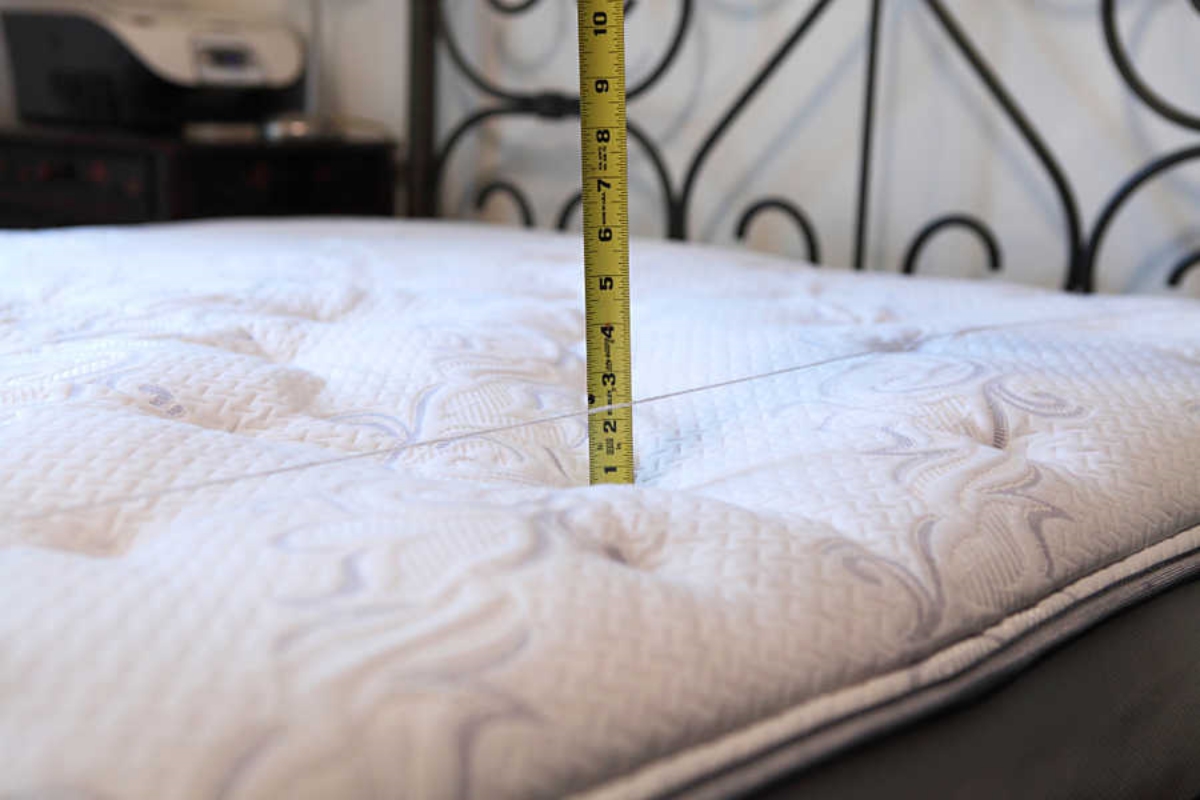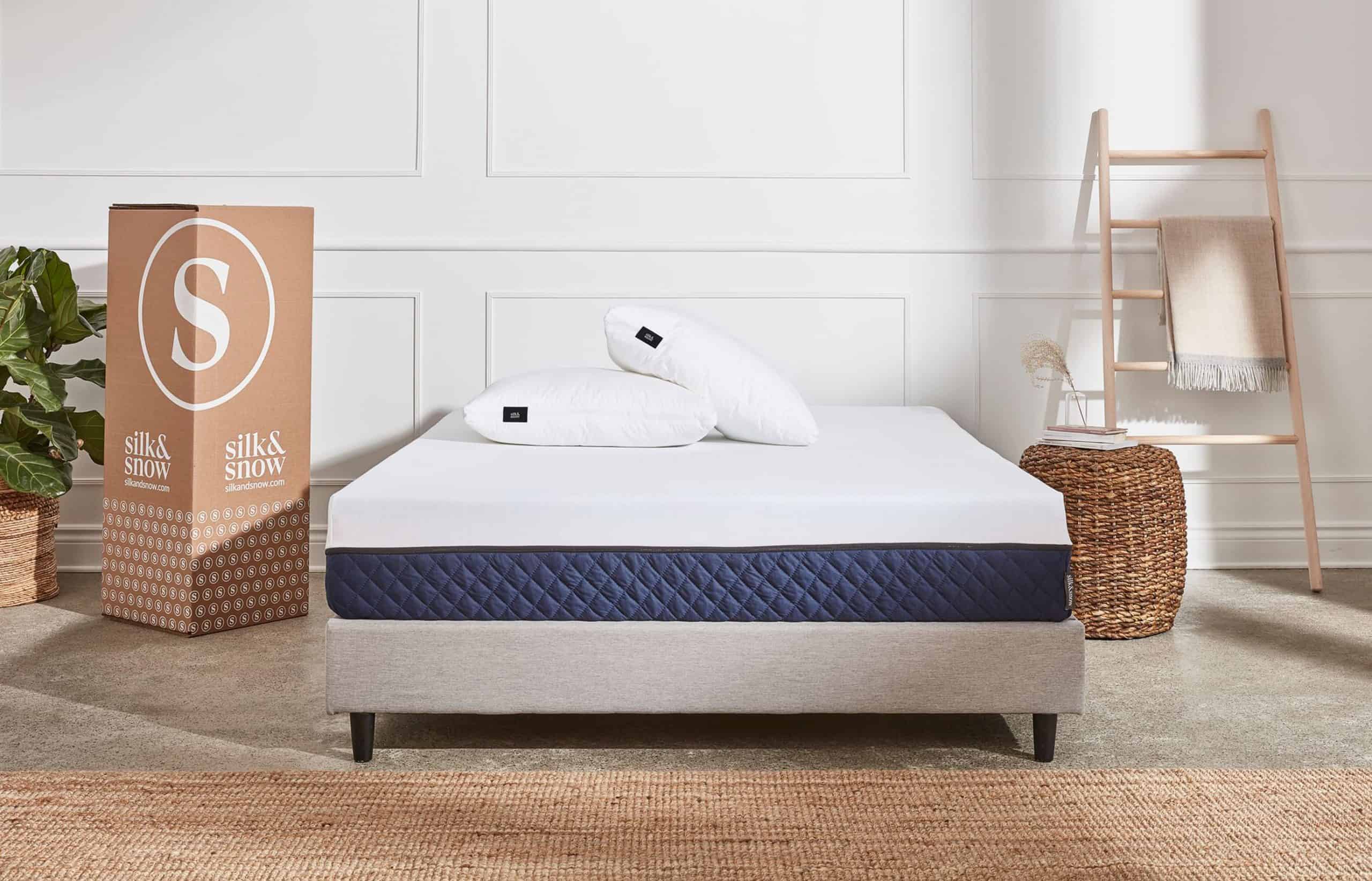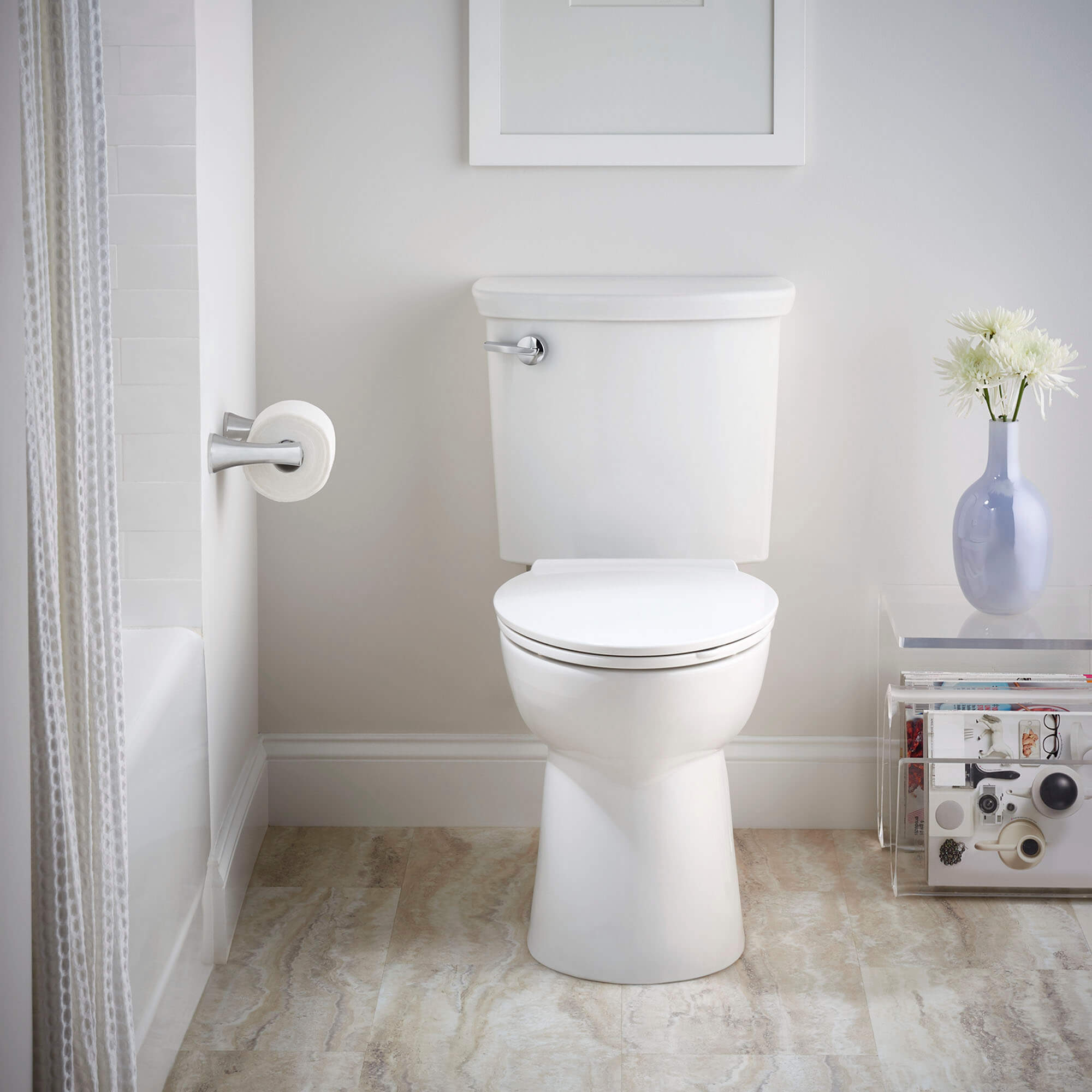Home>Furniture>Bedroom Furniture>What Is A Standard Mattress Height
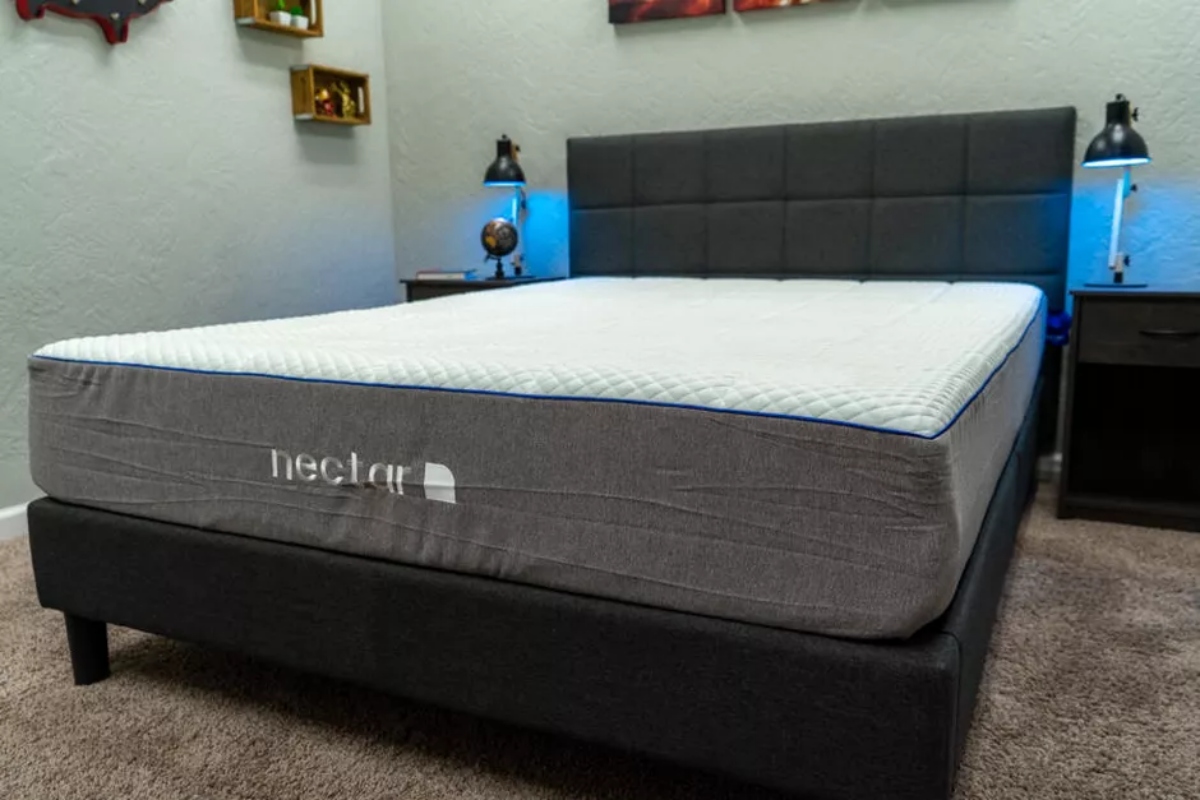

Bedroom Furniture
What Is A Standard Mattress Height
Modified: February 24, 2024
Find out the ideal height for your bedroom furniture with our guide on standard mattress heights, perfect for creating a comfortable and stylish sleep environment.
(Many of the links in this article redirect to a specific reviewed product. Your purchase of these products through affiliate links helps to generate commission for Storables.com, at no extra cost. Learn more)
Introduction
Choosing the perfect mattress for your bedroom is an essential part of creating a comfortable and inviting sleep environment. One crucial factor to consider when selecting a mattress is its height. The height of a mattress can impact not only the aesthetic appeal of your bedroom but also your overall comfort and convenience.
In this article, we will explore the concept of mattress height and its significance in creating an ideal sleeping experience. We will discuss the various factors that influence mattress height, the standard guidelines to follow, and the benefits associated with choosing the right mattress height. Additionally, we will delve into popular mattress heights available in the market, customization options, and how mattress height affects sleep quality and bedding considerations.
Understanding mattress height and its impact will help you make an informed decision when purchasing a new mattress, ensuring a restful and rejuvenating sleep every night.
Key Takeaways:
- Choose a mattress height that aligns with your needs for accessibility, aesthetics, and bedding options. Consider customization options to achieve personalized comfort and support.
- The height of your mattress impacts sleep quality, spinal alignment, and bedding compatibility. Select a standard or customized height for a comfortable and visually appealing sleep environment.
Read more: What Is The Standard Height Of A Toilet
Factors Affecting Mattress Height
The height of a mattress is influenced by various factors that determine its overall structure and composition. Here are some key factors that affect mattress height:
- Support System: The type of support system used in a mattress, such as innerspring, memory foam, latex, or hybrid, plays a significant role in its overall height. Different materials and construction methods can result in varying levels of thickness.
- Comfort Layers: The number and thickness of comfort layers, such as pillow tops, foam layers, or quilted plush covers, can contribute to the overall height of a mattress. These layers are designed to provide added cushioning and pressure relief.
- Coil Count: In mattresses with innerspring or hybrid construction, the number of coils present affects the height. Higher coil counts usually lead to a taller mattress due to the increased support and durability they provide.
- Materials Used: Different materials used in the construction of a mattress, such as high-density foam or organic materials, can impact the height. Some materials may naturally have more thickness, resulting in a taller mattress.
- Design and Brand: Each mattress brand may have its own unique design and specifications, which can influence the height. Some brands may prioritize thicker mattresses for added comfort and luxury.
It’s important to note that the height of a mattress is a personal preference and can vary from person to person. Factors like body weight, sleeping position, and individual comfort needs can also influence the ideal mattress height for an individual. Now that we understand the factors that affect mattress height, let’s explore the standard guidelines to follow in selecting the appropriate mattress height.
Standard Mattress Height Guidelines
While mattress height can vary depending on individual preferences and specific mattress models, there are some general guidelines to help you choose a mattress with a suitable height:
- Foundation: When considering the overall height of your bed, it’s important to account for the mattress and the foundation or base it will rest upon. Typically, bed foundations add an extra 8 to 12 inches of height to the mattress. Therefore, keep this in mind when selecting the height of your mattress.
- Accessibility: Consider your ease of getting in and out of bed. A mattress that is too high may require more effort and could be challenging, especially for individuals with mobility issues. On the other hand, a mattress that is too low may also cause difficulties when getting up in the morning.
- Bed Height: The ideal bed height is typically around 25 to 31 inches from the floor to the top of the mattress. This range ensures that the bed is easy to access and maintain, allowing for seamless bed-making and cleaning.
- Bedroom Aesthetics: The height of your mattress can contribute to the overall appearance and aesthetic of your bedroom. Consider the design and style of your room and how a specific mattress height may complement or enhance the overall look.
- Bedding Options: The height of your mattress can impact the type and size of bedding you use. Thicker mattresses may require deep-pocketed fitted sheets, while thinner mattresses may pair better with standard-sized sheets.
These guidelines can serve as a starting point in selecting the appropriate mattress height for your needs. However, it’s essential to remember that personal comfort and preferences should ultimately guide your decision.
Benefits of Standard Mattress Height
Choosing a mattress with a standard height can offer several benefits that contribute to a comfortable and convenient sleeping experience. Here are some advantages of opting for a mattress with a standard height:
- Easy Accessibility: A mattress with a standard height ensures easy access in and out of bed, making it convenient for people of all ages and physical abilities. It eliminates the need for excessive bending or climbing, promoting a hassle-free sleeping experience.
- Bed Making and Maintenance: With a standard mattress height, it becomes easier to make the bed and maintain its cleanliness. Bedding can be neatly tucked in, and the mattress can be easily lifted and repositioned when needed.
- Compatibility with Bed Frames: Standard mattress heights are designed to fit well with most bed frames, reducing the risk of compatibility issues. This allows for a seamless integration of the mattress with the bed frame and ensures stability and support.
- Flexible Bedding Options: Standard mattress heights allow for a wide range of bedding options. You can easily find fitted sheets, mattress protectors, and other bedding accessories specifically designed to fit mattresses of standard heights, ensuring a snug and secure fit.
- Visually Appealing: Mattresses with standard heights can enhance the overall aesthetics of your bedroom. They provide a balanced look to the bed and create a visually pleasing environment, especially when paired with appropriately sized bedding and bed frames.
- Enhanced Air Circulation: Standard mattress heights ensure proper airflow and ventilation. The space between the mattress and the bed frame allows air to circulate, preventing the build-up of moisture and promoting a cooler and more comfortable sleep environment.
By opting for a mattress with a standard height, you can enjoy the convenience, compatibility, and comfort it offers. It’s important to consider these benefits when selecting the right mattress for your bedroom.
Popular Mattress Heights in the Market
When shopping for a new mattress, you’ll come across various heights available in the market. While mattress heights can vary depending on the brand and model, there are some popular options that you’ll commonly find. Here are some of the most popular mattress heights:
- 6 to 8 inches: These mattresses are considered low-profile and are ideal for bunk beds, daybeds, trundle beds, or guest rooms with limited space. They are generally thinner and more lightweight, making them easier to maneuver.
- 10 to 12 inches: This range represents the most common mattress height. It suits a wide range of sleepers and mattresses, providing adequate comfort and support for most individuals. These mattresses are versatile and can fit well in various bed frames.
- 14 to 16 inches: These mattresses are known for their luxurious and plush feel. They offer additional layers of cushioning, making them perfect for those who prefer a more indulgent sleeping experience. These heights are common for hybrid or pillow-top mattresses.
- 18 to 20 inches: Considered as ultra-high profile mattresses, these options provide maximum height and thickness. They are particularly designed for those seeking an extra-luxurious sleep experience. These heights are often found in specialized mattresses like adjustable beds or high-end models.
It’s important to consider your personal comfort preferences, sleep needs, and bed frame compatibility when selecting a mattress height from the available options. Keep in mind that mattresses with thicker profiles may require deep-pocketed sheets for a proper fit.
While these are popular mattress heights, it’s worth noting that some brands offer mattresses with custom heights to cater to individual preferences. Custom options can provide unique and tailored sleep experiences, allowing you to find the perfect mattress height for your specific needs.
Read more: What Is The Standard Dresser Height
Adjusting Mattress Height for Customization
While standard mattress heights cater to the needs of many individuals, some people may have specific preferences or requirements that call for customized mattress heights. Fortunately, there are several ways to adjust the height of a mattress to achieve a personalized sleeping experience. Here are some options for adjusting mattress height:
- Adding a Mattress Topper: A mattress topper is an additional layer placed on top of the mattress to enhance comfort and support. It can increase the overall height of the mattress, providing a customizable solution for those who desire more cushioning or a softer sleeping surface.
- Using Mattress Pads or Protectors: Mattress pads or protectors can add a slight increase in height while also offering extra cushioning and protection. These accessories can be particularly useful in enhancing the overall comfort of a thinner mattress.
- Utilizing Adjustable Bed Bases: Adjustable bed bases allow you to customize the height of your mattress by changing the angle of inclination. With the ability to raise or lower different sections of the bed, you can easily achieve the desired height and position for maximum comfort and relaxation.
- Using Bed Risers or Platform Beds: Bed risers are leg extensions that elevate the entire bed frame, providing additional height to the mattress. Alternatively, platform beds are designed with built-in elevated platforms that offer a higher sleeping surface without the need for risers.
- Considering Different Box Springs or Foundations: The type of box spring or foundation used can influence the overall height of the mattress. Opting for a low-profile box spring or foundation can decrease the overall height of the mattress, while a higher foundation can add more height.
By exploring these customization options, you can find the perfect mattress height that suits your individual preferences and sleep needs.
Remember, achieving the right mattress height is not only about personal comfort but also ensuring compatibility with your bed frame and bedding. It’s crucial to consider these factors when making adjustments to ensure a harmonious and comfortable sleeping environment.
When choosing a standard mattress height, consider the overall look and feel of your bed, as well as your own comfort getting in and out of bed. A standard height is typically around 25 inches, but you can also find lower profile or higher profile options to suit your needs.
Choosing the Right Mattress Height for Different Needs
When selecting a mattress, it’s essential to consider your specific needs and preferences to ensure optimal comfort and support. Here’s a guide to choosing the right mattress height based on different requirements:
- Back Pain and Joint Support: If you struggle with back pain or joint issues, opting for a mattress with a medium to high profile can be beneficial. A thicker mattress provides better support and cushioning, helping to alleviate pressure points and promote proper spinal alignment.
- Flexibility and Versatility: If you prefer a mattress that offers versatility, such as the option to use it in different rooms or with varying bed frames, a mattress with a standard height of around 10 to 12 inches is a good choice. This height is compatible with most bed frames and allows for easy maneuverability.
- Customization and Personalization: For those who prioritize customization, choosing a mattress with a lower profile and adding a mattress topper allows for personalized height adjustment. This way, you can fine-tune the feel and support of the mattress according to your specific preferences.
- Accessibility and Ease of Use: Individuals with mobility issues or who may find it challenging to get in and out of bed should opt for a mattress with a lower profile. A mattress in the range of 6 to 8 inches is more accessible and ensures a hassle-free sleeping experience.
- Aesthetic and Bedroom Decor: If creating a visually appealing bedroom is your priority, consider the overall aesthetic and theme of your room. A mattress with a height that complements the decor and style of your bedroom can enhance the overall look and feel of the space.
By considering your specific needs and preferences, you can select a mattress height that best aligns with your requirements for comfort, support, flexibility, accessibility, and aesthetics.
Keep in mind that it’s also crucial to test different mattress heights before making a final decision. Visit a mattress store or read customer reviews to gather insights and determine which height offers the perfect balance of comfort and functionality for your individual needs.
Mattress Height and Sleep Quality
The height of your mattress can have a significant impact on your sleep quality and overall comfort. Here’s how mattress height can affect your sleep:
- Spinal Alignment: A mattress with an appropriate height plays a crucial role in maintaining proper spinal alignment. When lying down, your spine should be in a neutral and straight position. A mattress that is too soft or too firm, or one that is too high or too low, can cause misalignment and lead to discomfort and poor sleep quality.
- Pressure Relief: The height of a mattress can affect its ability to provide effective pressure relief. A mattress with adequate cushioning and support, achieved through the right height and materials, can alleviate pressure points. This reduces the likelihood of waking up with pains or discomfort, allowing for a more restful sleep.
- Comfort and Support: The height of your mattress should provide a comfortable and supportive surface for your body. This can vary depending on personal preference and individual needs. Some individuals may prefer a taller mattress for added plushness and cushioning, while others may find a lower profile more comfortable for a firmer feel.
- Temperature Regulation: The height and composition of a mattress can influence its breathability and heat retention properties. Thicker mattresses with multiple layers may trap heat, causing discomfort and restlessness during the night. On the other hand, thinner mattresses or those with cooling technologies can promote better airflow and temperature regulation, leading to more restful sleep.
- Partner Disturbance: If you share your bed with a partner, consider the impact of mattress height on motion transfer. A mattress with additional height and cushioning can help absorb movement and minimize disruption when one person moves or changes positions during sleep.
It’s important to choose a mattress height that promotes proper spinal alignment, relieves pressure points, and offers the desired level of comfort and support for a good night’s sleep. Keep in mind that individual preferences and needs may vary, so it’s essential to test different mattress heights and consult with professionals if needed.
Ultimately, finding the right mattress height that aligns with your body and sleep preferences can contribute to improved sleep quality, reduced discomfort, and enhanced overall well-being.
Mattress Height and Bedding Considerations
When choosing the height of your mattress, it’s important to consider how it will impact your bedding choices. The height of your mattress can influence the type, size, and fit of your sheets, blankets, and other bedding accessories. Here are some key bedding considerations related to mattress height:
- Fitted Sheets: The height of your mattress will determine the sheet pocket depth you need. Standard pocket depths typically range from 8 to 14 inches, but deep-pocketed sheets are available for mattresses with taller profiles. Ensure that the fitted sheet you choose has the right pocket depth to securely fit your mattress.
- Flat Sheets and Comforters: The overall thickness and volume of your mattress can affect the size and fit of flat sheets and comforters. A thicker mattress may require larger-sized bedding to effectively cover and drape over the sides. Check the dimensions of your bedding to ensure they can accommodate the height of your mattress.
- Bed Skirts and Dust Ruffles: A bed skirt or dust ruffle is used to conceal the space between the mattress and the floor, providing a polished and cohesive look. The height of your mattress will determine the length and drop length needed for an appropriate fit. Measure the distance from the top of your mattress to the floor to select the right bed skirt or dust ruffle.
- Pillows: The height of your mattress can also affect your pillow selection. A taller mattress may require larger or higher loft pillows to maintain proper alignment with your neck and spine, while a thinner mattress may pair better with lower loft pillows. Consider your comfort preferences and any specific neck or back support needs when choosing pillows.
- Mattress Protectors and Encasements: Mattress protectors and encasements help safeguard your mattress from spills, dust, allergens, and pests. Ensure that the protector or encasement you choose is compatible with the height of your mattress and provides adequate coverage and protection.
By considering the height of your mattress and its impact on bedding, you can ensure that your sheets, blankets, and other bedding accessories fit properly and provide the desired aesthetic and functionality. Taking these bedding considerations into account will help create a cohesive and comfortable sleep environment.
Remember to measure the height of your mattress accurately and consult the product specifications of your bedding to ensure a proper and secure fit. Taking the time to find the right bedding for your mattress height will enhance the overall look and feel of your bed and contribute to a more enjoyable sleeping experience.
Read more: What Is The Standard Height Of A Bed Frame
Adjusting Bed Frame Height for Mattress Compatibility
Ensuring the proper compatibility between your mattress and bed frame is essential for a comfortable and stable sleep surface. If your mattress height does not align well with your bed frame, you may need to consider adjusting the bed frame height. Here are some options for adjusting the bed frame height to achieve mattress compatibility:
- Adjustable Bed Frames: Some bed frames come with adjustable height options, allowing you to raise or lower the height according to your mattress thickness. These frames often have adjustable legs or multiple settings to provide flexibility in accommodating different mattress heights.
- Bed Frame Risers: Bed frame risers are leg extensions that can be added under the bed frame to increase the overall height. These are particularly useful if your mattress is too low for your liking or if you want to match the height of your bed frame with your mattress.
- Replaceable Bed Frame Legs: Some bed frames have legs that can be replaced with longer or shorter options. By switching to legs of a different length, you can adjust the height of the bed frame to better match the height of your mattress.
- Custom Bed Frame Modifications: In some cases, you may need to explore custom modifications to your bed frame to ensure the perfect height for your mattress. This could involve working with a professional carpenter or utilizing specific bed frame accessories to customize the height according to your needs.
- Platform Beds: Platform beds are designed with built-in elevated platforms or slats that offer a specific mattress height compatibility. They eliminate the need for additional adjustments and are a convenient option if you’re starting from scratch or looking to replace your current bed frame.
When adjusting the bed frame height, it’s important to maintain stability and ensure that the frame adequately supports the mattress. Avoid making height adjustments that compromise the structural integrity of the bed frame or jeopardize your safety during sleep.
By adjusting your bed frame height to match your mattress, you can create a harmonious and well-fitted sleep surface, allowing for maximum comfort and stability.
ConclusionChoosing the right mattress height is a crucial consideration when creating an ideal sleep environment. The height of a mattress can affect not only the aesthetics of your bedroom but also your comfort, convenience, and overall sleep quality. By understanding the factors that influence mattress height, following standard guidelines, and considering individual preferences and needs, you can make an informed decision that best suits you.
Factors such as support system, comfort layers, coil count, materials, design, and brand contribute to the overall height of a mattress. Standard mattress height guidelines provide a starting point in selecting an appropriate height that aligns with bed accessibility, bedroom aesthetics, and bed-making ease. However, personal comfort and preferences should ultimately guide your decision-making process.
Choosing a mattress with a standard height offers a range of benefits, including easy accessibility, convenient bed-making and maintenance, compatibility with bed frames, flexible bedding options, visual appeal, and enhanced air circulation. However, customization options such as mattress toppers, adjustable bed bases, bed risers, or different box springs can be explored to achieve a personalized height that meets specific comfort and customization requirements.
When considering mattress height, it’s important to remember that it can impact your sleep quality. Proper spinal alignment, pressure relief, comfort and support, temperature regulation, and partner disturbance are all influenced by the height of your mattress. By selecting a mattress height that promotes these factors, you can contribute to better sleep, reduced discomfort, and improved overall well-being. Furthermore, bedding considerations such as fitted sheets, flat sheets, bed skirts, pillows, and mattress protectors should be taken into account to ensure compatibility and a seamless look.
Adjusting your bed frame height to match your mattress is also essential for proper mattress compatibility and stability. Options such as adjustable bed frames, bed frame risers, replaceable legs, or platform beds can help achieve the desired height alignment between the mattress and bed frame.
In summary, the height of your mattress plays a crucial role in your overall sleep experience. By considering factors such as personal preferences, comfort, support, aesthetics, and bedding requirements, you can select the right mattress height that provides optimal comfort, enhances your bedroom aesthetics, and contributes to a restful and rejuvenating sleep night after night.
Frequently Asked Questions about What Is A Standard Mattress Height
Was this page helpful?
At Storables.com, we guarantee accurate and reliable information. Our content, validated by Expert Board Contributors, is crafted following stringent Editorial Policies. We're committed to providing you with well-researched, expert-backed insights for all your informational needs.
